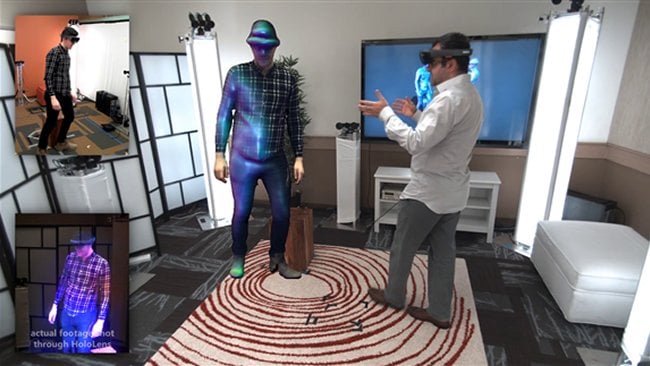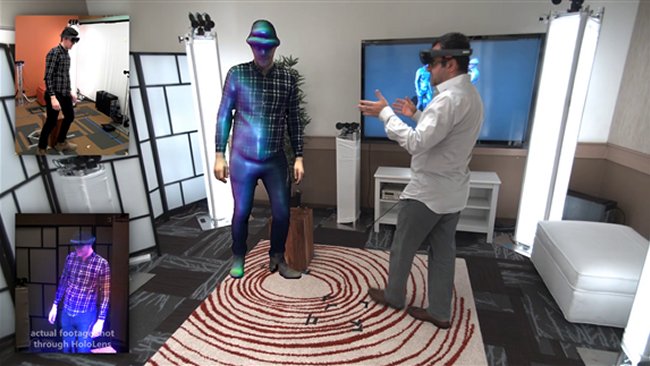
 So near yet so far: Holoportation in action
So near yet so far: Holoportation in action
As HoloLens development edition kits finally begins to ship, Microsoft offers a glimpse of our augmented reality future with the unveiling of its Holoportation system.
While pundits cynically focus on Virtual Reality devices as conduits for a new era of immersive variants on those twin entertainment industry monkeymakers, gaming and porn, Microsoft has long worked to pitch its HoloLens augmented reality device as something with more serious potential.
And so, beyond an initial attention-grabbing Minecraft demo, the company has also focused on its potential value in engineering and design, scientific collaboration and communication. Its newly unveiled Holoportation tech makes good on that early promise, presenting a new – albeit one suspiciously familiar to anybody familiar with Star Trek, Star Wars or pretty much any science fiction movie – and potentially game-changing system for remote communication.
A new type of 3D capture technology designed to allow for a subject’s entire ‘performance’ to be scanned, compressed, transmitted and then virtually reconstructed in polygonal form at some remote destination, Holoportation has been developed by Microsoft’s Interactive 3D Technologies (i3D) division, whose previous research in human pose estimation and surface reconstruction using the company’s Xbox Kinect motion capture system clearly laid the groundwork for this latest innovation.
At first glance, Holoportion is easily dismissed as some gimmicky alternative to Skype, but there are clearly some interesting social implications for a communications system that brings two (or more) parties into the same physical space, enabling them to see, hear and interact with one another almost as naturally as they were in the same room.
The system - which utilises an array of scanners to capture the form and movements of each subject, and then a HoloLens device to project the polygonised and animated avatars back into each user’s view of real space – is clearly something of a work-in-progress. In the video released by Microsoft the humans are visibly rendered with a relatively low polygon count, there are occasional tracking glitches and most crucially there’s the kind of lag that users of Skype will be all too familiar with. As latency issues are minimised and resolution is improved, however, we can expect an ever more impactful and seamless experience.
At which point it could be a truly useful tool across multiple sectors, not least broadcast and film production. Pre-videoed and remote auditions are already a staple in the industry, so it’s not too much of a stretch to imagine casting directors turning to Holoportation to better vet potential signups. Performance-captured animated projects could be built using actors operating across different space and time zones. Artists and directors working with visual effects and animation studios on the other side of the world would be better able to physically convey their ideas. Maybe it could even help transform the soulless experience of acting against green screen with nothing but a tennis ball stuck on the end of a broomstick for company. For which at least Ian McKellan would surely be thankful should Peter Jackson were to come calling again.
Microsoft has yet give details about the camera rig required to make Holoportation a reality, while the HoloLens itself is currently only available in $3000 Developer Edition form, but the consumer edition of the headset will ultimately be much more affordable, and there’s no reason to the cameras to be especially high-end. The company is facing some competition in this area, however, with AR company Meta demonstrating a rival remote communications system at the Game Developer’s Conference in March. With a $949 price tag, Meta’s AR device is available for pre-order now and due for launch this autumn.
Read more on Microsoft’s Holoportation system here.
Tags: VR & AR


Comments